On the face of it, the neighborhood of Kurtuluş appears staid and sober, its long and narrow treeless streets of concrete beige apartment blocks smushed like cookie dough into the baking sheet of Istanbul’s sole gridiron street plan. Hemmed in to the north and west by cemeteries and the east by Istanbul’s mantelpiece Republic Avenue, at first sight, it feels cornered by death and modernity in equal measure.
Only when Kurtuluş streams southward into the winding and destitute quarter of Dolapdere does the chaos that once made it Istanbul’s liveliest and most dangerous neighborhood begin to reappear. But even there is but a faint echo of the raucous days when pimps and rebels prowled its streets and Ottoman authorities feared to enter.
Like everywhere in Istanbul, Kurtuluş was entirely remade in the 20th century. Now home to Turkey’s most important Armenian community, for nearly four centuries Tatavla, as the neighborhood was known until 1929, was the beating heart of Istanbul’s working-class Greek Orthodox community (known in Turkish as ‘Rum,’ i.e. Roman-Byzantines).
And punch above its weight ‘Little Athens’ did. In addition to producing some of the Ottoman Empire’s leading writers, painters, and Olympians, Tatavla also gave Istanbul its most notorious murderers and arms merchants, not to mention its biggest party, the annual Baklahorani, or pre-Lenten carnival.
A place to call home
Sadly, the vast majority of its Rum long decamped to Greece, leaving but a scattering of elderly as reliable fodder for the antique stores that spring up like mushrooms in Istanbul’s former Christian quarters. Yet in their stead have arrived a steady stream of Armenians, Kurds, and eastern Anatolians, not to mention healthy smatterings of Africans, Syrians, Iranians, and South Asians.
As Istanbul’s last ‘Christian ghetto,’ Kurtuluş has also attracted a large number of intellectuals, LGBTQ, and other marginalia in the New Turkey.[1] “If the Armenians are safe here,” jokes Yetvart Tomasyan, the founder of Turkey’s leading Armenian-language publishing house, Aras Yayıncılık, “then they figure it must be safe for them, too!”
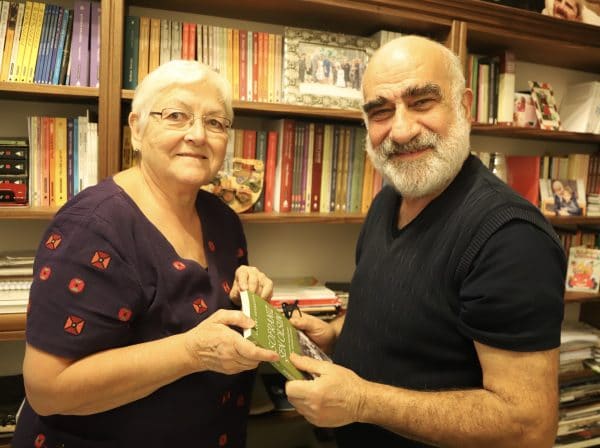
From Ahir, the 45-year old Turkish engineer from southwest Anatolia who was kicked out of the Gülen movement[2] as a college student before converting to Christianity, to Seta, an 86-year old Armenian who moved here from Tarlabaşı in 1971, and Andrew, a 30-something graduate student in Islamic history from New Jersey who moonlights as a pastor for a Turkish Anglican flock each Sunday, Kurtuluş is a snapshot of religious freedom in 21st century Turkey.
But it’s also one of intellectual and sexual freedom, too.
If “Turkey is a soup of ideologies and interpretations,” says Marina, a binarily unencumbered Chaldean-Orthodox-Armenian who grew up in the neighborhood, then Kurtuluş is one of its choicest ingredients.
A visual artist educated at the Italian lycée in Istanbul and university in the Netherlands, Marina embodies everything that’s compelling about the neighborhood. Even her nondescript building, with an illegal casino on the first floor, a known Istanbul drag-queen on the second, and her studio on the third, fits the bill. Though fluent in Italian, Greek, English, and Turkish, she has no plans to escape to Greece, where much of her family lives, or Europe, as many liberal Turks now aspire.
“Kurtuluş,” she says, “is the only place in the world I feel at home.”
The right kind of studs
Though scant physical evidence of the neighborhood’s rich historical past remains, the fiercely independent spirit of old Tatavla lives on. For a neighborhood that enjoyed semi-autonomy for most of the Ottoman period, the feeling that Kurtuluş is an island of civic freedom, religious tolerance, and political pluralism remains.
From Nostalji, the bookshop and café where the local Armenian intelligentsia sips coffee downstairs while members of the Revolutionary Socialist Workers Party (DSIP) dish out strategy in the makeshift upstairs library, to the communist agitprop shop that doubles as a luggage depot outside the Osmanbey metro, the spirit of reflection and rebellion is alive and well in Kurtuluş.
Dig a little, and you’ll find this is only fitting. After all, the free and proletarian roots of Tatavla—’at ahırları’ in Turkish, ‘ta taulon’ in Greek, or ‘horse studs’ in English—predate the conquest of Constantinople itself (1453).
A small Rum village overlooking the Golden Horn in the early 15th century, Tatavla was first known in Greek as Kerasohori for the area’s abundant cherry trees. Only in the 14th century, with the rise of the Genovese presence, did it become Tatavla, famed for supplying stallions to the city’s wealthy Genovese in Galata, the merchant colony across the Golden Horn from the historic peninsula of Constantinople.
Like many aspects of Greek Orthodox life, Tatavla thrived all the more with the arrival of the Turks. For though Byzantium was en route to the dustbin, a far more powerful process of centralization was to begin under the Ottomans—one that would bring daring young lads from all over the Mediterranean and Aegean and drop them at the gates of Tatavla.
The wisdom of Suleiman
Beginning during the reign of Suleiman the Magnificent[3] and his admiral Hayreddin Barbarossa Pasha,[4] a half-Greek, half-Albanian pirate from the island of Lesbos, in the early 16th century the Ottoman navy began giving the Venetians, Genoans, and Spaniards a run for their money across the Aegean and Mediterranean.
Under Hayreddin Barbarossa’s interminable advances, each Ottoman victory brought scores of mostly Greek-speaking prisoners of war back to Istanbul in fetters. Skilled sailors and hereditary corsairs, their labor and expertise were much needed if Suleiman was to wrestle the rest of the civilized seas from the Genovese and Venetians.[5]
Put to work to expand the Ottoman fleet’s shipyards in the Golden Horn, rather than return home after their bondage, more often than not these Greek-speaking pirates married Rum girls from up the hill in Tatavla and settled down. As such, it was only fitting the neighborhood enjoyed the special patronage of the Grand Admiralty of the Ottoman Navy until the early 19th century.
Daily life in the 19th century
Not unsurprising for an area settled by sailors and pirates, Tatavla was a raucous, filthy, and debauched part of town best known for its taverns, live music halls, distilleries, and gazinos.[6] Equally frequented for its meyhanes, a place to eat meze and drink the anise-based liquor called rakı, it also developed its own musical style, a combination of mandolin, harmonica, oud, and qanoon under whose spell revelers often swooned until the sun came up.
With each street divided by profession, Tatavla was also a portrait of pre-industrial Ottoman power: to one block were restricted mast-makers, to others were barrel-makers, gunsmiths, boilermakers, circus-performers, and shoemakers. Most famous of all were its tulumbacılar, or firemen, a profession of toughs so notorious that their appellation is coterminous with ‘hellraiser’ in Turkish—partially because they often set the very fires they were paid to put out.
Yet even amidst this urban brouhaha, the neighborhood retained a strong rural flavor.
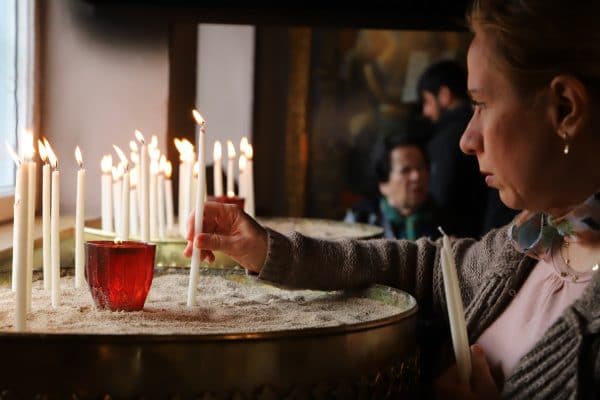
Still on the outskirts of Istanbul, particularly before the first tramline was installed in 1911, Tatavla boasted vineyards and orchards, countless urban vegetable gardens, and five holy springs well into the 20th century. In his 1874 travelogue, “Constantinople,” Edmondo De Amicis complained bitterly of the equal profusion of chickens, pigs, and crafty children roaming about at will there.
Legally, the neighborhood was doubly privileged. Not only did Selim III[7] issue a royal decree in 1793 stating that only Rum could reside there; in addition to enjoying the patronage of the Ottoman Admiralty, the neighborhood also housed no state police force. When a government pronouncement needed making, police simply summoned the bell-ringer of Aya Dimitri, the main church, who would call out the announcement whilst banging his stick against the cobblestones.
Liberté, fraternité, massacrer
The first blow to this fragile but fruitful modus vivendi was the Greek War of Independence (1821-1830). Though first plotted from cafés in Odessa, it was not long before Tatavla became embroiled in the broader struggle to sow the seeds of the French Revolution in the Near East.
When members of the revolutionary Greek movement Filiki Eteria (Society of Friends) were found hiding in the neighborhood—and arms found buried in local church cemeteries—the Ottomans cracked down hard, arresting hundreds and ending Tatavla’s special protection under the Admiralty.
But in losing one patron, it gained another: Czarist Russia. Forever since Catherine the Great’s victory over the Ottomans in northern Bulgaria in 1774, Russia had claimed the right under the Treaty of Küçük Kaynarca to intervene on behalf of Eastern Orthodox Christians in the Turkish Empire.
This pseudo-relationship was put to the test particularly during the Crimean War (1853-56), when the spiritual leader of Tatavla, Serafim Efendi, intervened with the Ottoman authorities to ensure a proper burial for 163 Russian prisoners of war who had died of the epidemic while being quartered down the hill in Kasımpaşa.
Against the vehement protestations of the British and French, the Ottomans’ allies, these dead Orthodox souls were given full honors at Aya Dmitri, after which Tatavla’s leaders received the patronage of St Petersburg until the October Revolution.
Orphans on the eve of war
The bastard of multiple sovereignties, with each passing decade it became harder to define for which temporal power Tatavlans labored. The dying Ottoman Empire? The scrappy but resurgent Kingdom of Greece? The swashbuckling French or British empires?
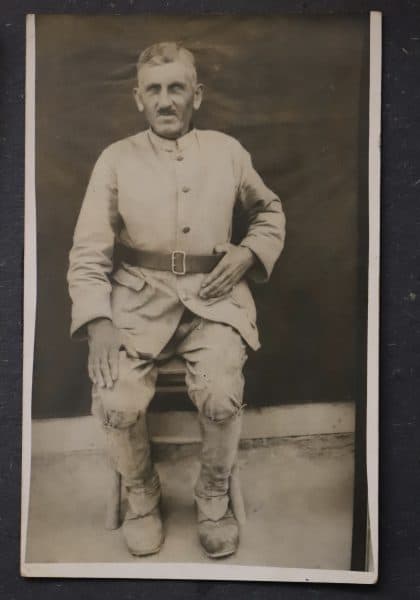
When two athletes from Tatavla, the Rum brothers Yorgo and Nikolaos Alibrantis, set off to compete in the 1906 Athens summer Olympic games, they caused a small diplomatic crisis by taking gold in the 10m high jump and pentathlon. Greek officials immediately claimed victory for Hellas, to which the Ottoman representatives strongly protested, only with great persistence getting their victories recognized as Ottoman.[8]
When WWI broke out, Istanbul, like Budapest, Vienna, and St. Petersburg, was not built to bear the contradictions of total war. With the empire now at arms against its former allies Britain and France, not to mention its ancient enemy, Russia, neighborhoods like Tatavla were caught in the middle.
These contradictions were all the more acute under the British and French occupation of Istanbul from 1918-1923.
Though a deceivingly happy time for Tatavla’s Rum, many of which happily hung Greek flags from their flowered balconies, the occupation was less amusing for the city’s Muslims. On top of imperial implosion, the death of the caliphate, and infidel occupation of their crown city, they also had to contend with a steep rise in crime, more often than not perpetrated by non-Muslim gangs.
If you can make it in Tatavla…
None was more notorious than Hiristo Anastadiyadis (1898-1920), aka Hrisantos, a young Tatavla hoodlum whose mother managed a known Beyoğlu brothel.
In addition to robbing passengers along the newly opened tram, he and his brother, Koço the Organ Grinder, would stick up unwitting stiffs leaving his mother’s bagnio. Later, under the cover of chaos of the occupation years, he and his crew, which included Mehmet the Ghost, Nico the Macaroni Maker, and Ironmonger Anton, terrorized the inhabitants of occupied Istanbul.
Rumored in the Turkish press to have the protection of British intelligence, for whom they were said to snoop, they rampaged around the city at will, Hristanos alone accused of killing 13 (mostly Turkish) police officers and seven civilians before dying in a shoot-out with police 1920.[9]
Far more murderous than even Hristanos, however, was another Tatavla lad who would come variously to be known as Sir Basil Zaharoff, Count Zaharoff, the Armaments King, the Merchant of Death, or simply the Mystery Man of Europe. He was all of the above.[10]
Yet through it all—the Légion d’Honneur, endowed chair at the Sorbonne, and honorary doctorate from Oxford—to no cause did Europe’s Merchant of Death remain more committed than his childhood home of Tatavla, where he endowed local schools and sports clubs with sufficient funds to last for decades.
Baptism by fire
Though the Turkish authorities spared Tatavla the massacre many feared might come at the end of the Allied occupation, the Tatavla Fire of 1929 gave the young republic a historic opportunity to remake this den of violent infidels. As public opinion announced in the state-backed paper, Cumhuriyet:
The name Tatavla brings nothing but thieves and murderers to mind… its name alone has a harmful effect upon the ear. Yet what was once a den of murderers is now being cleansed with the arrival of Turkish families. It is only fitting that its ugly name is replaced by ‘Kurtuluş’ (Liberation) [11]
Indeed, a reckoning of a kind was always going to be necessary—and not always for the worse. For starters, only in the 1920s did Turks feel safe enough, both physically and culturally, to start frequenting the neighborhood. Second, most inhabitants could hardly string together a sentence in Turkish. For the first time ever, minority and foreign schools were forced to offer Turkish classes, a development that has finally paid off a century later.[12]
Republican residue
That Kurtuluş was mostly Rum well into the 1970s is often forgotten: so heavy, consistent, and contrived were the blows to Istanbul’s Rum that, from a certain point of view, it’s a wonder at all they lasted a half a century under Turkish Republican rule.[13] Yet as Colin Woodard shows in his magisterial American Nations,[14] culture is thicker than blood.
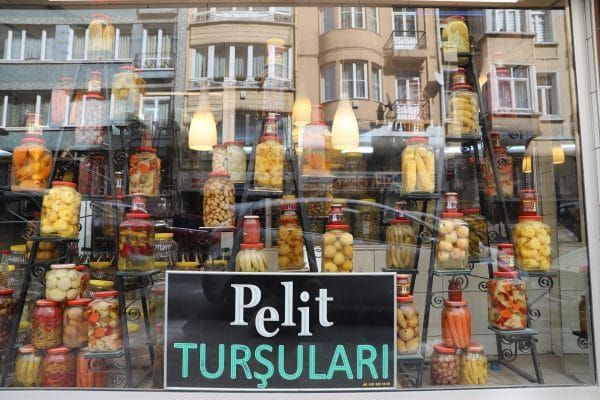
Though merely a few hundred Rum may remain today, the taste and manners of old Tatavla live on: from the bookstores and bars, ice cream parlors and pickled good providers, meyhanes, milk-pudding, and mezze makers, famed patisseries and profiterole pushers, Kurtuluş is a snapshot of an older Istanbul that has been spared the pulverizing rod of concrete Anatolian dreams.
Yet there’s another unspoken factor propping up its cultural infrastructure like an invisible steel beam: the presence of Turkey’s most robust Armenian community.
An enlightened gaggle
Given its rare status as an affordable, centrally located, and minority-friendly neighborhood, Kurtuluş became a 20th century haven for Armenians leaving both their historic quarters in Istanbul[15] and hardscrabble cities deep in the Anatolian heartland for the first time in millennia.
Leaving behind places like Sivas, Kayseri, Tokat, and Siirt, this last wave of Armenian emigration included women like Payline Tomasyan, whose family left Tokat for Kurtuluş in 1958 so she could study at the Esayan Girls’ Lycée in nearby Taksim. After working as a teacher for many years, Payline helped her husband Tomas and a close friend of theirs, Hrant Dink,[16] launch Aras Publishing in 1993.
“Turkey’s minorities are like a brood of chickens,” jokes Tomas, “they go unthinkingly wherever the other does.” Which is why they established Aras: to give Turkey’s 50,000 silent Armenians a voice.
Though 400,000 of two million survived the 1915 genocide, a major crackdown muzzled Armenian intellectual life in the young republic when the single-party CHP government of İsmet İnönü imprisoned most of the community’s writers and journalists in 1946.[17] Of the leading Armenian intellectuals born in Turkey in the 1910s and 1920s, nearly all died in exile, usually Paris or Moscow.[18]
A silence only broken with the end of the Cold War, even in the 1990s the work of Aras was a bold proposition. Only around 2000, says Mihran, the founder of a highly respected Istanbul dance company who was born and raised in Kurtuluş, did it finally become acceptable to speak Armenian in the street and be proud of one’s heritage.[19] Taking courage from them, many other communities now do, too.
Rebel with an occasional cause
Tatavla and now Kurtuluş has always served a two-fold purpose within Ottoman and Turkish society: to be an island and a mirror. Sown by Genovese interests and watered with each Ottoman conquest, for centuries it was a vector of vice and culture, a rebel that could do no wrong. Though milder under the Turkish Republic, it is no less independent in spirit.
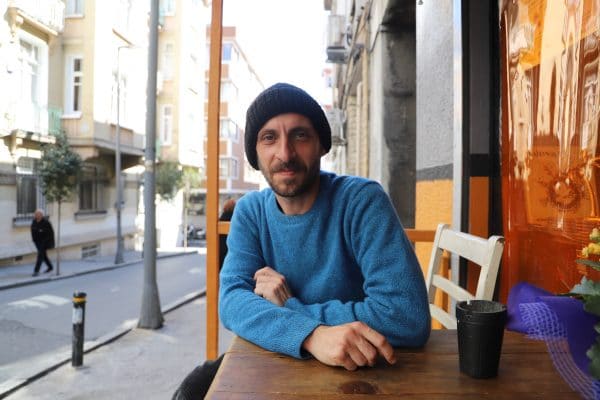
A heretical buoy in a vast sea of convention, the thousands of revelers who gathered each year for Baklahorani seemed to intuit this. Though frowned upon by Byzantine emperor, Ottoman sultan, and Orthodox patriarch alike, for centuries the authorities grudgingly allowed Tatavla’s notorious carnival to proceed—its continuance a perennial barometer of imperial confidence levels.
Only with the emergence of the ‘secular’ and ‘social democratic’ Turkish Republic was it finally banned in 1942. Though briefly allowed under Erdoğan in 2009, this experiment in multicultural magnanimity was brought to an end in 2014. Mysteriously, however, it was allowed back on this year, albeit in the guise of sober cultural events.
When I arrive at Aya Dmitri the morning of the first day’s event, only the church’s groundskeeper is there. “The whole thing’s been canceled,” says Panayotis rather matter of factly, “out of respect for last night’s martyrs”— the 33 Turkish soldiers killed in a single Russian airstrike in Syria the night before. “But come back next year. Maybe they’ll let us have it then.”
Cover Photo: Hakan Şenbahçeli / Flickr
Inside Photos: Evan Pheiffer
[1] See Jenny White’s magisterial Muslim Nationalism and the New Turks. Princeton, 2012.
[2] Easily Turkey’s most controversial organization, at its height this ‘modernist Islamist’ organization, known in Turkish as ‘Hizmet’ (service), claimed some four million members, was a close partner to President Erdoğan’s AK Party, infiltrated the highest ranks of Turkey’s police and judiciary, and is widely thought to have orchestrated the failed 2016 coup attempt.
[3] The longest-ruling Ottoman sultan, ‘the Lawgiver’ (‘Kanuni’), as he is referred to in Turkish for his Solomon-like wisdom and equity—a nomenclatory coincidence lost on no one at the time—ruled from 1520-1566.
[4] Born to an Albanian father who’d converted to Islam and a Greek Christian mother on what is now the Greek isle of Lesbos, Heyreddin Pasha went on to conquer and incorporate the coasts of modern-day Tunisia and Algeria into the Ottoman Empire, thus making the Mediterranean a ‘Turkish lake.’
[5] A trend that vastly expanded after the conquests of Admiral Piyale Pasha, the Ottoman Grand Admiral and Vizier from 1553 until his death a quarter century later. Captured as a Croatian boy by Suleiman the Magnificent at the Battle of Mohacs in 1526—an encounter that decided the fate of Central Europe for centuries—Piyale would be raised at court and go on to capture Elba, Corsica, Naples, and Reggio Calabria, not to mention incorporate Cyprus, Tunisia, and Chios into the Ottoman Empire.
[6] A Turkish rendering of ‘casino’ that involved more dressing up and drinking than playing of cards.
[7] The reform-minded sultan who ruled from 1789-1807 until being deposed by Janissaries and assassinated. That Selim was close friends with the renowned Rum court painter Konstantinos Kizikinos and would often visit him at his house in Tatavla across from Aya Dimitri, Tatavla’s most important church, did not hurt.
[8] Sadly, the problem persisted well into the early Republican period. Home to the first athletic club in Turkey, the Iraklis Jimnastik Kulübü, or Hercules Gymnastic Club (1896), Tatavla persistently churned out some of Turkey’s best athletes, from the captain of its 1936 national basketball team, Diyonis Sakolakis, to its first shot-put champion, Dimitri Zafiroğlu (who later moved to the US to work for NASA). More unfortunate was the fate of Naris Halepoğlu, Turkey’s leading Olympian in the late 1940s and early 1950s. A Rum from Tatavla, he was told by the Turkish Republic that he could only compete in the 1948 Olympics if he Turkified his name to Nurettin, which he refused to do (See Hüseyin Irmak, Tatavla’dan Kurtuluş’a, p.31, 2003).
[9] Tellingly, Hristanos is referred to in western sources as a ‘gangster,’ in Turkish ones as Istanbul’s first serial killer.
[10] Born in the Turkish Aegean town of Muğla in 1849 as Vasileios Zacharias, Zaharoff moved to Tatavla as a boy. Waiting tables in Galata and touting for Beyoğlu brothels, he later set up himself as a professional arsonist working for the Constantinople Fire Brigade. The trick? To set fire to the wooden mansions of the wealthy before arriving just in time to negotiate what it cost to save their valuables. After stints in London, Cyprus, Ireland, and St. Louis, he eventually became the arms manufacturer Vickers’ ‘representative abroad’ for 30 years, selling weapons to both the Greeks and the Turks, the Brits and the Boers, the Russians and the Japanese. Knighted for his failed efforts to buy Turkey out of WWI, he is said to have singlehandedly bankrolled the disastrous Greek invasion of Asia Minor in 1919. See https://www.smithsonianmag.com/history/the-mysterious-mr-zedzed-the-wickedest-man-in-the-world-97435790/
[11] http://www.agos.com.tr/tr/yazi/5968/tatavlanin-kurtulusu-nasil-olur
[12] The trick, according to one man who was born and raised in Kurtuluş in the 1980s and grew up speaking Armenian with his parents but Turkish with his friends? Being the first generation to grow up with television in the home.
[13] From 1923, when many were de-barred and forced from their businesses or professions, to 1926, when the production and sale of alcohol was nationalized, thus stripping non-Muslims of their greatest golden goose, to the 1942 Wealth Tax, the pogroms of September 6-7, 1955, the 1964 Deportations, and the aftermath of the 1974 invasion of Cyprus, not a decade went by without a cataclysmic strike against Istanbul’s ancient Rum community. For more details, see https://www.resetdoc.org/story/istanbuls-poisoned-princess/.
[14] In which he shows that, despite massive emigration from across the world in the 19th and 20th centuries, the US still retains regional cultural variations whose roots reflect original 17th and 18th century settlement patterns.
[15] Samatya, Yedikule, and Kumkapı, ancient quarters within the walls of old Istanbul, and Üsküdar and Kadıköy, their historic counterparts on the Asian side of the Bosporus.
[16] The much beloved Turkish-Armenian journalist who was assassinated outside his newspaper in neighboring Pangaltı in 2007
[17] This was influenced by both the nascent Cold War and Stalin’s call in 1945 for the Armenian diaspora to return to Soviet Armenia, which 100,000 from Greece, the Balkans, Middle East, US, and France heeded between 1946-9. Left-wing Armenian newspapers such as Nor Or (New Day) and Nor Lur (Daily News) were shut down, and after serving minor sentences, usually between 3 months and 1.5 years, most of the community’s outspoken members fled to Beirut, France, Germany, the US, or USSR.
[18] http://www.agos.com.tr/tr/yazi/6154/tek-parti-doneminde-kapatilan-cesur-gazete-nor-or
[19] Over lunch at a landmark eatery until recently run by an ancient Armenian woman from Diyarbakir, Kurtuluş’ spirit shines forth. One minute, Mihran bumps into an old acquaintance, a Turkish designer from Izmir who’d married an Armenian and has lived in Kurtuluş for 20 years. Though divorced, she still sends her daughter to the local Armenian school. A minute later, a curmudgeonly older man at the table next to us pipes in. “Are you Armenian?” he asks Mihran in a mildly posh English accent. They go back and forth in Turkish, Armenian, French, and English for the next 15 minutes, our new acquaintance haranguing this foolish youth for one thing or another. “And don’t forget!” he proclaims in French when getting up to leave, “to leave me two tickets for the ballet at this restaurant.”
Follow us on Twitter, like our page on Facebook. And share our contents.
If you liked our analysis, stories, videos, dossier, sign up for our newsletter (twice a month).


